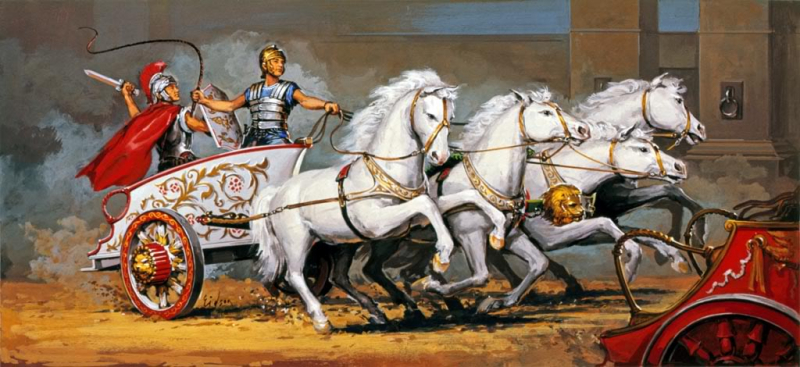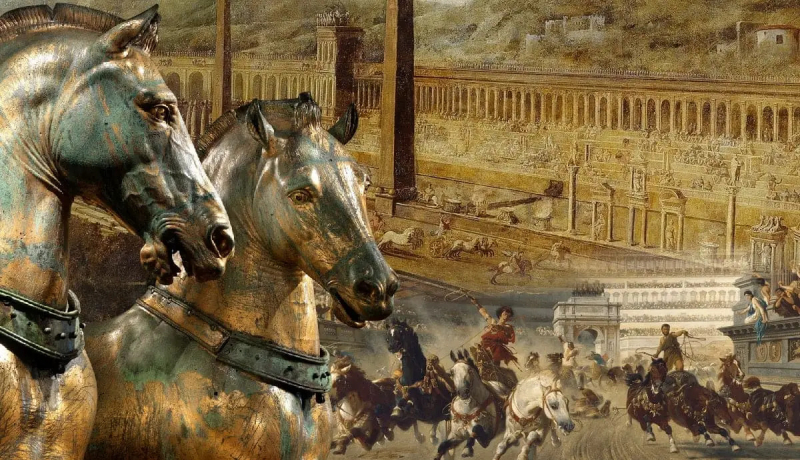Chariot Racing Was Huge
Nobody can doubt that people enjoy watching sports. According to Wikipedia, the 24 most watched broadcasts in history have all been related to sports. This includes coverage of various Olympic Games, World Cup soccer, and even two Muhammad Ali boxing contests. Both the London and Rio Summer Olympics set a record with approximately 3.6 billion viewers. It's not surprising, then, that sports and competition were equally popular under the Byzantine Empire.
Roman-style chariot races were a popular sport throughout the Byzantine Empire. Remember that chariot racing was not like a current footrace or even a NASCAR race. Sure, there was a lot of speed, but there was also a lot of death and mayhem. Chariot Racers risked being smashed against the stone pillars or being dragged to death behind their horses. The exhilaration, bloodshed, and money to be made gambling appear to be the draw of racing for fans. It was the possibility of money and independence for the racers. Many of these charioteers were slaves, but winning a single race could earn them up to 15 bags of gold.
Diocles was the most famous charioteer in history, and it is estimated that he earned 36 million sesterces during his career, enough to feed the entire city of Rome for a year. For example, a Roman soldier might have earned around 1,200 sesterces per year. In Byzantine Chariot racing, there were four teams: the Whites, Greens, Blues, and Reds. These teams eventually combined to form the Greens and Blues. When fans weren't tossing nail-studded pills under the track to sabotage their opponents, they were breaking out in bloody riots to support their own side. The Greens ambushed the Blues and killed 3,000 of them at one time.












